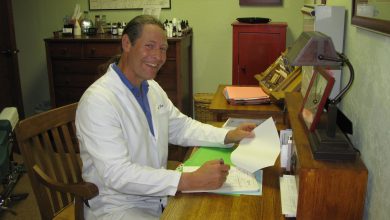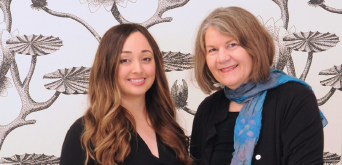Steven Remington – Ashland Independent Film Festival
Steven thanks so much for speaking with us today. Please tell us a little about yourself and your background in the arts.
I studied music in high school and college, along with organizational communication. I was one of the founding board members of the Oregon Bluegrass Association in 1982, and I produced my first festival the same year at Estacada City Park. I learned a lot and it felt great to be able to present great local artists in such a welcoming environment. In 1988 I helped produce my first large-scale event; the Waterfront Blues Festival. It’s since become the single largest fundraiser for Oregon Food Bank, netting a million dollars a year.
I learned from these events that a non-profit, in partnership with a high-quality entertainment activity, can bring people together for a shared experience. I began to understand that events can create community; communities of film lovers, jazz lovers, parade lovers, whatever. People feel a deeper connection to those organizations presenting the activity, and those people experiencing the event with them.
Although much of my experience has been in presenting live music, most of my career has been managing civic celebrations, like da Vinci Days at OSU, the Eugene Celebration, and the Saint Paul Winter Carnival. Plus I’ve had the opportunity to teach festival and event management at University of Oregon, Arizona State University and the University of Idaho.
There are a lot of philosophies behind how to grow and cultivate events. I am curious how you have learned to create dynamics around allowing something to emerge versus the old school model of command and control.
Events and festivals need to have a creative life of their own. In nature there is an emergent quality to processes and organisms. I think festivals exhibit this same behavior; at first glance they may seem disorganized, but within the chaos is the potential to be something more, something greater than what you might have planned for. Just like in nature, they resist being controlled. So no matter how well we plan, there are things that happen along the way that will influence the outcome.
I believe we have to be aware of these potentialities – to be looking for them and be ready to encourage them when we see them, rather than trying to control or extinguish them. Rather than seeing our job as putting out fires, we find the fires and see if we can add fuel to a select few. See if there’s opportunity in the chaos.
What event planners do is collect and store information, then change it into a performance schedule, itinerary, or advertisement. We try to manage communication and people, but what ultimately happens is not completely under our control. So you encourage the volunteers, artists, and filmmakers to express themselves within the structure of the event. You can guide and inform, but you have to let the communities experience the chaotic potentiality. This is what I have learned. When I started on this journey 30 years ago, I had to find a way to articulate how I saw these things emerging. How I saw benefit in allowing the event to express itself.
Please talk about the momentum that events create and then how this gets managed and directed.
When I was the director of the St. Paul Winter Carnival I became fascinated by this sport of curling. One of 127 events in the festival that lasts for eleven days, this is a sport in which a large weight, called a curling rock, is maneuvered by a team, somewhat akin to shuffleboard. Except that, in addition to being able to spin the rock to curve its trajectory on the sheet of ice on which it is played, two team members with brooms can sweep the area in front of the traveling stone to vary the speed and direction in very minute ways. But the mass will carry it mostly in the direction of its initial release.
Through the minute changes the sweepers make, they are able to alter ever so much the course and speed of the stone so that it will end up in a strategic location. I was fascinated because it looks like, as a first time observer, that efforts of the sweeping couldn’t possibly make any difference. But it does. Much like a festival, very small moves can alter the trajectory in very significant ways. There is a momentum that we call ‘tradition’ and it can be influenced on a very micro level.
You seem to be a very early adopter.
I like to think of events as a completely unique, newly created environment; a unique collection of people, ideas, activities and physical environments. The connections that are made by volunteers and fans, by the artists and board members; these are all unique connections. So you are creating something that has never existed before.
I think there is a “reveal” at each step of the way. This is what makes it deeply satisfying to me; to find meaning and opportunity along the way. It’s important that it connects to your mission and vision. Does it need to be nudged back or do you trust enough to let it go in a different direction? You have to ask yourself if you are so stubborn about what you want to happen that you wouldn’t accept something even better. Sometimes we can’t see the potential and we get stuck in the weeds. Self-justification, loss aversion, escalation of commitment – these are all human traits that can trip us up. We fall in love with our plan, and forget to appreciate what’s happening right in front of us.
Steven please talk about the three festival paradox.
I think it’s interesting that when we create a festival, we throw our energies into making it as predictable as possible. Streamlined, efficient, productive. Not that these are bad things. But they can block us from seeing what the festival ‘wants to be’. We filter that out and accept only those parts that conformed to the ‘plan’. And we have a strange memory function about it, like there are actually three festivals; there’s the one we planned, what actually happened, which is of course differently perceived by each individual, and then there’s the one we each remember. Your golf game is probably like that, too.
I produced a fundraising dinner for OMSI in Portland years ago, and the entertainment was a collaboration with Oregon Ballet and the Oregon Symphony. We had a huge stage set up for a choreographed tribute to the music of Duke Ellington. The dancers were sitting at bistro tables on a very low stage. The tables were actually props within the choreography. When the music started and the dancers got up to dance, the audience went up on the stage too. It was, after all, the end of dinner service. The audience did not realize at first that they were dancing within a choreographed piece. Of course, all the event planners in the room were stunned. But as the dance structure emerged, the participating audience ‘dancers’ noticed the professional dancers, and the piece blossomed like a flower. The dance emerged out of a crowded dance floor and the result was an unplanned visual spectacle that was remarkable. The audience relinquished the floor, and began spontaneous applause, and then let the dancers finish. I still get goose bumps over that one.
Please talk about the shared experience that occurs at an event or festival.
When people go to an event, they have an opportunity to experience others in a shared environment. This can build a kind of social capital between people who are not necessarily alike. These connections are important to communities because they are connecting people from different walks of life – different gender, ethnicities, educational levels – through this shared experience. This can make us more tolerant and expand our world view.
Why did you choose to come on board with Ashland Independent Film Festival?
I felt like I could make a real contribution to this festival. And it’s a good fit. I’m an Oregonian, I see the promise that we’ve all been working towards over the last 50 or so years. Clean water, clean air, local food sources, open dialogue, compassionate leadership, and accessible, high-quality arts and creative opportunities; all the things that make up a livable and sustainable community. Plus, people love this event. That’s a powerful thing, and I wanted the privilege of guiding it into the next decade, keeping it safe, and helping it be what it wants to become.
Please talk more about the Co-Creation that you see occurring at AIFF.
People have a story to tell and it resonates with them to see plays and films in which other stories are being expressed. We see these hopes, dreams and desires on the screen and stage and we want this richness to be a part of our lives. And it does become a part of us by experiencing it.
The festival is a sort of containment field for the collective interest and aspirations of the community. And we get to process all the dynamic energy from the various communities of filmmakers and participants, and focus it and present it as a festival.
What are you working on now?
We are working on building the team, financing the effort, and selecting the program. It’s a natural function of non-profit events that you are always training people for certain positions. We are as much of an event training company as we are an event producing company. Since we are so lean – we only have four year-round employees – we rely on volunteers, interns and freelancers, which is pretty common in the industry. So basically we are putting everything into place so that when the time comes, we can meet the fans expectations. And keep an eye out for opportunities.
Learn More:
Ashland Independent Film Festival
325 A St #4, Ashland, OR
(541) 488-3823
www.ashlandfilm.org




